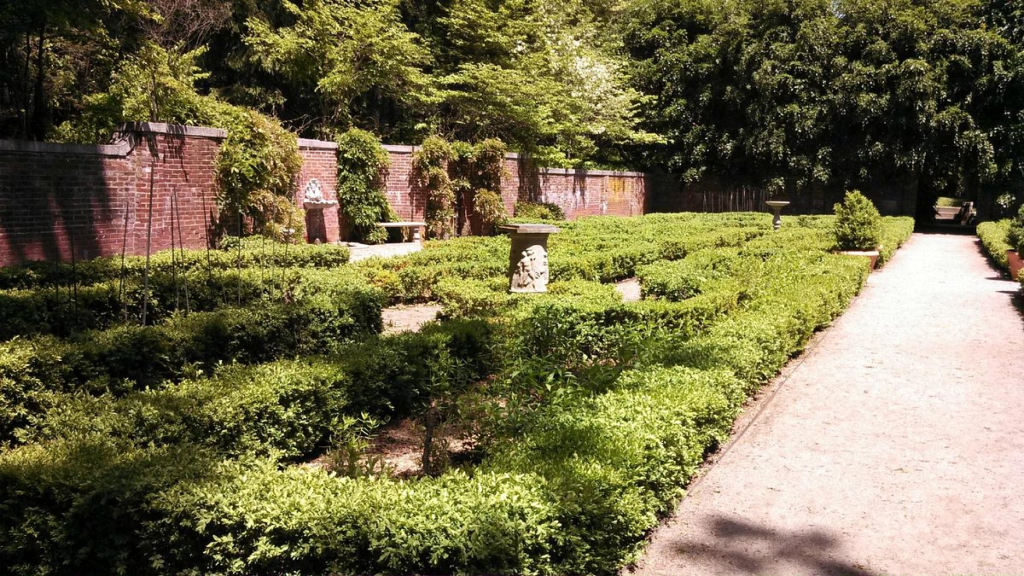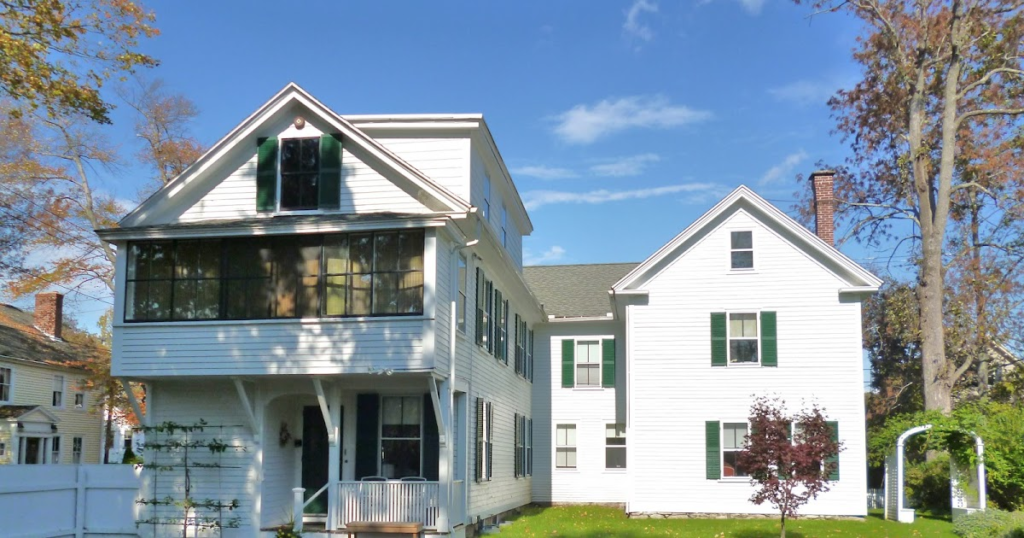Where the Powwow Stream streams into the lower Merrimack, Amesbury may be a delightful small city within the distant northeast of Massachusetts.
From its earliest days Amesbury had a solid notoriety for shipbuilding, and you’ll tap into this legacy at Lowell’s Pontoon Shop, still making wooden dories and skiffs by hand.
Within the mechanical age, the community got to be a center for cap making and carriage generation. Ancient brick-built plants from that time plague the downtown range, and presently house an grouping of curiously stores and benefit businesses
The famous artist and abolitionist, John Greenleaf Whittier (1807-1892) went through most of his life in Amesbury, and his house is presently a gallery scarcely changed since the time he lived here.
1. Macy-Colby House

Amesbury’s to begin with town receptionist, Thomas Macy (1608-1682) built this notable house around 1649 some time recently moving on to ended up an early European pilgrim at Nantucket.
In 1654 he sold it to Anthony Colby, a unmistakable figure in open life in Amesbury, and the primary of nine eras of Colbys to live in this house, some time recently Moses Colby (1822–1901) given the property to the Bartlett Cemetery Affiliation in 1899.
On Saturdays within the summer you’ll be able visit this magnificently protected To begin with Period home, broadly adjusted within the mid-18th century.
Among numerous other interesting things, the house contains Whittier’s Quaker cap, and a support that had a place to Amesbury inhabitant Susannah North Martin, a casualty of the Salem witch trials, hanged in 1692.
2. Chain Bridge

The country’s most seasoned persistently possessed, long-span bridge crossing is at the south conclusion of Primary Road crossing the Merrimack Waterway to Newburyport.
There has been a long-span bridge here since the development of a timber truss bridge in 1792. A small afterward, in 1810, this was supplanted by the primary wrought-iron chain suspension bridge in Modern Britain.
That structure collapsed in 1827, and the reproduction got to be a demonstrate for several other bridges within the locale. The bridge, 225 feet in length, was recreated once more in 1910 as a copy of its forerunner and has come through a few redesigns, most as of late in 2003.
3. Lake Gardner

This 80-acre impoundment on the Powwow Stream is inside strolling remove of Amesbury Center, and has been a prized resource for diversion since the 19th century.
There’s a little shoreline on the southern shore, with a shallow swimming zone, and sees crossing the length of the lake. On the eastern side there’s a interwoven of open parks and town-owned preservation regions, available by means of the path that starts following to the shoreline.
One, Battis Cultivate, has more than half a mile of shoreline on Lake Gardner, with a string of separated inlets for swimming or landing kayaks and canoes.
4. Amesbury Riverwalk Trail

Fair over a mile long, this well-maintained cleared way starts at the Lower Millyard downtown and takes after the Powwow Stream down to the Carriagetown Commercial center off Course 110.
The Amesbury Riverwalk passes through a calm corner of the town, crossing as it were one road (Rough Slope Rd), on the ancient right-of-way of the Eastern Railroad’s Salisbury-Amesbury Department, built in 1848.
At a few focuses you’ll see the Powwow Stream through the trees, and there are a few helpful get to focuses, counting the stopping part at the eastern trailhead.
5. Brewery Silvaticus

It appears right that one of Amesbury’s 19th-century mechanical buildings ought to be a brewery. You’ll discover it at the foot of a towering octagonal chimney that can be seen over Amesbury, with a brew plant that backs onto the Powwow Waterway.
Less IPA-heavy than numerous create breweries within the locale, Brewery Silvaticus specializes in conventional European lagers like German ales and Belgian farmhouse brews.
On tap when we made this list were two Pilsners, a Kellerbier, three Ales, a Belgian-style Tripel, and the brewery’s signature Dark Ale. Nourishment trucks are frequently stopped exterior, and there’s a menu of little nibbles, like pretzels, hummus, coldcuts, and cheddar cheese sticks.
6. Amesbury Days

Covering with the July 4th occasion, Amesbury Days incorporates more than a week of exercises, occasions and celebrations, starting in late June.
The beginning of this convention can be followed back to 1899, when the town’s millworkers were given the day off, which they went through at Lake Gardner. Ensuing Amesbury Days included trips to the shorelines from Hampton to Sailsbury.
Presently, there’s a pressed plan of occasions, counting live music exhibitions at the Millyard, open houses, a city-wide yard deal, a square party, a brew & music walk, a kids’ night at Legacy Stop, a 5k run and a Pride celebration, all coming full circle with firecrackers and music at Woodsom Cultivate on July 4th.
7. Amesbury Friends Meeting House

The flourishing Amesbury assembly of the Society of Companions is the most seasoned within the range, dating back to 1657. At that time gatherings were held in Modern Hampshire to elude abuse by the Massachusetts Inlet Colony’s Puritans.
The dynamic current Greek Restoration building, a small way west of downtown Amesbury, is the fourth meetinghouse, and was completed in 1851.
A practicing Quaker, John Greenleaf Whittier was a driving drive behind its development. His seat has been protected interior, and is checked with a plaque.
This wood-frame building is bigger than a conventional meetinghouse, which may be a reflection of its significance as the setting for regional quarterly gatherings from its completion up to 1962.
The most chamber has partitions that can be balanced with pulleys, depending on the occasion—services were gone to by the complete assembly, whereas commerce gatherings within the past were isolated by sex.
8. Maudslay State Park

A brief bounce over the Merrimack Stream to Newburyport, and you will be in a turn-of-the-century scene on the ancient domain of Frederick Solid Moseley (1852-1938).
He enlisted the spearheading lady scene designer, Martha Brookes Hutcheson (1871-1959) to plan the amazing grounds, dazzling remnants of which have survived within the frame of rhododendron, azalea, lilac, and natural product tree plantings, as well as the fantastic drives and stone bridges.
Come in early or mid-summer when the stop could be a revolt of color. The 500-acre property has 16 miles of trails for climbing, biking, horseback riding and cross-country skiing.
A electrifying highlight is one of the biggest normally happening stands of mountain shrub in Massachusetts.
9. R. E. Kimball & Company

Frequently spotted at farmers’ markets in northeastern Massachusetts, R. E. Kimball & Company makes almost about any kind of jam, jelly or natural product protect you may envision.
Based in a clapboard building, over the street from an ancient process from 1877, the company has been in commerce since 1955.
There are more than 100 items within the run, from apricot stick to cinnamon apple jam, all made utilizing conventional formulas, strategies and fixings, counting unadulterated cane sugar. The manufacturing plant and outlet store are open Monday-Friday amid typical commerce hours.
10. Amesbury Industrial Supply Co.

Going by a equipment store might not be best of your list of traveler exercises, but few equipment stores have a area just like the Amesbury Mechanical Supply Co.
Part of the Millyard, this can be in a previous woolen process dating back to 1825, and built as Process 2 by the Salisbury Fabricating Company.
As you browse the store, it’s worth recalling that a hand-dug channel of the Powwow Stream would have once surged underneath your feet within the cellar, fueling two 24-foot water wheels.
It’s consoling to know that nowadays the store is fueled by sun based boards on the roof. Individuals swear by Amesbury Mechanical Supply Co., established here in 1973 and known for its gigantic stock, stocking or requesting each device, asset or component you may require.
11. Amesbury Center

With a stately, tree-lined primary road and protected process building clustered around the Powwow Stream, downtown Amesbury merits as much time as you’ll be able allow it.
The center is laid out on uneven ground, with a whirl of lanes and inexhaustible nearby businesses, numerous of which have been around for decades.
Packed into a little sweep are displays, boutiques, collectibles shops, a make brewery, and a shocking differences of eateries, from wood-fired flatbread pizzas to white tablecloth Italian.
Along the Powwow’s millrace, your interest will draw you into the Millyard, where a cauldron of ancient material production lines encases an charming open air space for live performances and open air motion picture appears within the summer.
Amesbury incorporates a buzzing social calendar, counting a mammoth piece party in June to raise the shade on the summer season and kick off Amesbury Days.
12. John Greenleaf Whittier House

In Amesbury you’ll be able visit the house of John Greenleaf Whittier, where the artist and eminent abolitionist composed much of his verse and exposition, counting the cherished Snow-Bound (1866).
The John Greenleaf Whittier House was built in 1811 and was acquired by Whittier in 1836, moreover serving as a domestic to his mother, close relative, and sister Eliza, recalled in her claim right as a writer and vocal abolitionist.
Most of the first building’s decorations, stylistic layout, and structure are accurately as they were at the time of Whittier’s passing, much appreciated in portion to the endeavors of his incredible nephew, who included a moment story over the house’s eastern half when he lived here at the turn of the 20th century.
The house is open to the open on Saturdays, May through October, and as of late the Amesbury Cap Gallery has been included to the visit on the more up to date moment floor.
13. Lowell’s Boat Shop & Museum

This working vessel shop on the Merrimack Waterway dates back to 1793 and proceeds to construct conventional dories and skiffs with strategies sharpened by seven eras of the same family.
Lowell’s Vessel Shop contains a one of a kind spot in Unused Britain history, as the origin of the angling dory, created by author Simeon Lowell (1745-1830), and refined by his grandson Hiram Lowell (1814-1897).
Within the 19th century there was an get together line at this complex that’s thought to have impacted Henry Ford’s mass-production strategies.
To demonstrate, more than 2,000 water crafts were made here, by hand, in 1911 alone. You’ll see more than two centuries of history in these buildings, wearing respected ship’s knees and support beams, and see conventional abilities in hone.
The shop is open for guided visits, and has a assortment of programs and occasions within the hotter months.
14. Bartlett Museum

The town historical center is set in a charming ancient building that was initially the Bartlett School, opened in 1870 and after that turned into a gallery to check Amesbury’s tricentennial in 1968.
This fascination is open within the evenings, Friday-Sunday, Dedication Day end of the week to Labor Day end of the week. The History Room here highlights Local American artifacts, a timeline of neighborhood history, and propagations of a Victorian parlor and a Colonial kitchen.
Within the other rooms you’ll find cabinets showing characteristic history examples, an show specifying Amesbury’s military heritage, and a protected 19th-century schoolroom.
On the grounds may be a carriage house, with cultivate instruments, apparatus and true carriages and wagons made in Amesbury.
15. Ceder Hill Farm

Dating back to 1978 and traversing three eras of the Cook family, Cider Slope Cultivate encompasses a picture-perfect setting on a rich slope. These 145 sections of land are worked utilizing natural, non-GMO hones, with 90% self-generated power via wind turbines and sun based boards.
You’ll be able visit for a long pick-your-own season, running from April (tulips) to the occasion season (Christmas trees). The top is summer and drop, with berries, wildflowers, peaches, apples and pumpkins, whereas hayrides are portion of the involvement.
The Cultivate Store brims with tasty things developed and made on the cultivate or created locally, and includes a pastry shop adored for its apple cider donuts.
Children will venerate the cultivate, and can utilize play hardware, meet the goats, nourish the chickens and take portion in a assortment of programs.






Leave a Reply